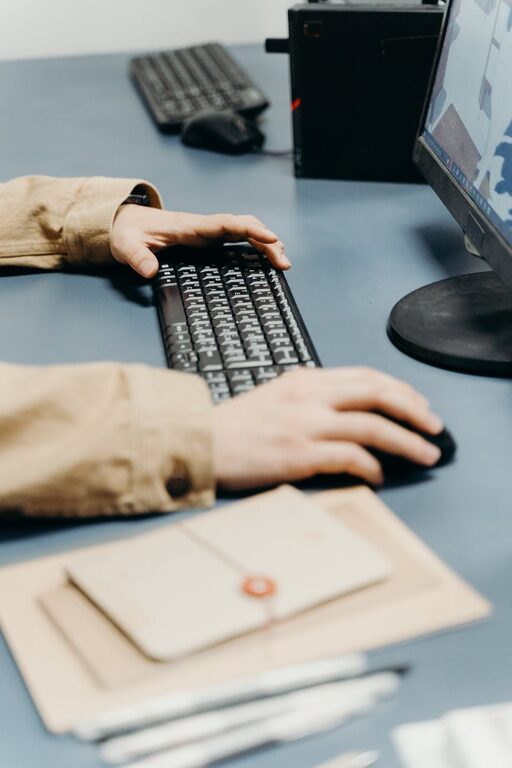Creating an ideal desk setup is more than just aesthetics—it’s about building an environment that promotes focus, comfort, and efficiency. Whether you work from home, in an office, or study, how you arrange your workspace can deeply affect your daily performance and well-being.
In this post, we’ll explore practical tips to design a desk setup that helps you stay focused and physically comfortable throughout your workday. From ergonomic principles to decluttering strategies, these ideas will support a balanced workspace tailored to your needs.
Why Your Desk Setup Matters
Your desk is where you spend hours handling tasks, reading, writing, or using your computer. A poorly designed setup can lead to distractions, discomfort, and even health issues like back or wrist pain. Conversely, a thoughtful arrangement encourages sustained concentration and reduces fatigue—helping you be more productive and happy with your work.
Key Elements of an Effective Desk Setup
1. Choose the Right Desk and Chair
Your desk and chair form the foundation of your workspace comfort.
– Desk height: Ideally, your desk should allow your arms to rest comfortably at a 90-degree angle when typing. A standard height is about 28-30 inches, but adjustable desks are excellent for customizing.
– Chair support: Invest in an ergonomic chair with adjustable height, lumbar support, and a comfortable seat cushion. Your feet should rest flat on the floor or a footrest.
2. Optimize Monitor Placement
The position of your computer monitor significantly impacts your posture and eye comfort.
– Eye level: Your screen’s top edge should be at or slightly below eye level. Avoid looking sharply up or down.
– Distance: Keep the monitor about an arm’s length away (20-30 inches) to reduce eye strain.
– Multiple screens: If you use more than one monitor, arrange them side by side, centered to your main line of sight to avoid excessive neck turning.
3. Arrange Lighting to Avoid Glare and Shadows
Good lighting helps maintain alertness and prevents headaches.
– Natural light: Position your desk near a window if possible, but avoid direct glare on your screen.
– Task lighting: Use an adjustable desk lamp to illuminate your work area without creating harsh shadows.
– Screen brightness: Adjust monitor brightness to complement ambient lighting, minimizing eye strain.
4. Keep Your Desk Decluttered and Organized
A clutter-free desk reduces distractions and makes it easier to find what you need.
– Daily tidy-up: Spend a few minutes clearing your desk at the end of each day.
– Storage solutions: Use organizers, trays, or drawers to keep supplies within reach but out of sight.
– Minimal essentials: Limit items on your desk to those you use regularly, such as your computer, notebook, and a few writing tools.
5. Incorporate Comfort Accessories
Small additions can improve comfort and reduce physical strain.
– Wrist rest: A cushioned pad can support your wrists while typing or using a mouse.
– Footrest: If your chair height doesn’t allow feet to rest flat, a footrest helps improve posture.
– Ergonomic mouse and keyboard: These tools are designed to reduce repetitive strain injuries.
6. Personalize Your Space Wisely
Adding personal touches can make your workspace more inviting without distracting you.
– Plants: Small indoor plants add color and can improve air quality.
– Photos or artwork: Keep visuals calming and inspiring rather than busy or chaotic.
– Scent: Lightly scented candles or essential oils may boost mood and alertness—just ensure they don’t overwhelm.
Tips for Maintaining Focus at Your Desk
Even the best setup needs habits that support concentration.
– Set regular breaks: Use techniques like the Pomodoro method (25-minute focused work, 5-minute break) to prevent burnout.
– Limit distractions: Silence notifications, close unnecessary tabs or apps, and use noise-cancelling headphones if needed.
– Keep water and healthy snacks nearby: Staying hydrated and nourished helps maintain mental sharpness.
Final Thoughts
Arranging your desk thoughtfully is an investment in your productivity and well-being. By focusing on ergonomics, lighting, organization, and personal comfort, you create a space that supports your best work.
Try integrating a few of these tips into your current setup and notice the difference in your focus and comfort. Remember that everyone’s preferences are unique—feel free to experiment and find what works best for you. A well-designed desk is the foundation for a successful and enjoyable workday.



